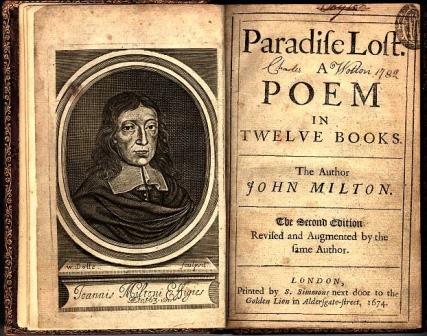An important ingredient of Milton’s grand style is his use of epic similes. By using the examples of Paradise Lost, Book – I, we will elaborate this fact in the next paragraphs.
A striking feature of Milton’s style in Paradise lost, book – I is the use of epic similes, which may be considered as a poet of epic machinery. What is a simile? A simile is basically a comparison by which anything can be elaborated for the purpose of explanation.
In an epic poem similes are used:
- For the purpose of illustration
- But they serve also to decorate the epic theme and character.
They may be divided into further categories:
i. Simple similes in which comparison is barely stated
ii. Elaborated similes
Homer was the first poet who made use of similes in his epic lliad around 800 B.C. His simile “Travels beyond the point (or points of comparison) and gives a complete poetic picture of some scene or incident suggested to the mind of the poet. It is also used for decoration or has been called a decorative comparison or long-tailed simile.” Homer used these simple similes in a somewhat original manner because they give relief to the reader. These similes are called Homeric similes. John Milton has brought in number of these similes in Book.
An example of the Homeric simile is the Leviathan, which Milton uses to compare the huge form of Satan sprawling on the lake of fire to Leviathan. This sea-beast is a kind of big whale, which when comes to the surface of the sea occupies many miles. When it is observed, it gives the impression of an island situated somewhere in the mid-ocean. Besides giving an impression of unimaginable size, it also gives an idea of danger, trickery, and falseness of appearance. Milton goes further to give extra details of how mariners of antiquity were mistaking it to disembark on it for rest:
Or that sea-beast
Leviathan, which God of all his work
Created hugest that swims the clean steam;
Him, happily slumbering on the Norway foam,
The pilot of some small night-foundered skiff
Deeming some Island, oft, as seamen tell,
With a fixed anchor in his scaly rind,
Moors by his side under the lee (Li., 201 – 207)
Another simile, which Milton compares the shield of Satan with the full moon as it was observed by Galileo through his telescope:
His ponderous shield,
Ethereal temper, massy, large and round,
Behind him cast; the broad circumference
Hung on his shoulder like the Moon, whose Orb
Through Optic, Glass the Tuscan artist views (Li. 284 – 288)
Similarly Satan’s spear is compared with the most of same great flagship:
His spear, to equal which tallest pine
Hewn Norwegian hills, to the Mast of
Some great Admiral were but a sword (Li., 292 – 294)
In order to give an idea of countless hosts of fallen angels, Milton compares their number with the autumnal leaves in Vallanbrosa when the trees of Etruria, arching over shed their leaves in great number:
This as Autumnal leaves that straw the books
In Vallanbrosa, where the Etruria shades
High over-arched embower; (Li., 202 – 304)
The face of Satan is compared with the sun in eclipse while the eclipse is supposed to be an ill omen: Less than Archangel ruined, and the excess.
Of glory obscured, as when the sun new risen
Looks through the horizontal misty air
Shorn of his beams, or, form behind the Moon
In dim eclipse, disastrous twilight sheds
On half the nations, and with fear of change monarchs (Li., 593 – 599)
Eclipses have always been considered for both the fall or the destruction of the Kingdoms is quite appropriate to the situation because Satan himself is passing through such a condition. The rebel angels are further compared to locusts, which darkened the sky of Egypt when Moses waved his powerful rod:
Yet to their General’s voice they soon obeyed
Innumerable, as when the potent rod
Of Amran’s son, in Egypt evil day,
Waved around the coast, up called a pitchy cloud
Of locust, warping on the caster wind,
That over the realm of impious Pharoah hung
Like night, and darkened all the land of Nile (Li., 337 – 343)
These locusts lay upon the Kingdom of wicked and impious Pharoah-like night and overshadowed all the plains of Egypt. This shows the great number of the fallen angel who are being addressed by Satan. John says about Miltonic similes:
“His similes are less numerous but more varied than those of his predecessors… He compares the shield of Satan to the orb of the moon. He crowds the imagination with the discovery of the telescope and all the wonders, which the telescope discovers. “
Ralegh remarks:
“Sometimes following Homer, he borrowed a figure from rustic life, as where, for instance, he compares the devils, crowding into the pandemonium to swarm of bees…”
Milton’s similes testify to the wide range of his, scholarship and knowledge and reveal his familiarity with the course of ancient history. “No poet, since Milton days has recaptured the solemnity and beauty of the large utterances of Gabriel or Belial or Satan.” Raleigh adds further, “In the epic similes the use of alliteration produce strange musical effects.”

